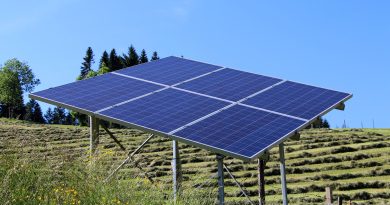Do Solar Panels Pay For Themselves
Investing in solar panels can lead to significant long-term savings on electricity bills, but the initial cost can be substantial. Understanding the payback period—the time it takes for the savings to equal the initial investment—is crucial for making informed decisions. This guide will cover the factors affecting solar panel costs, electricity rates, system size, and government incentives, and provide calculations and examples to help estimate the payback time.
Table of Contents
- 0.1 Understanding Payback Period and Return on Investment (ROI)
- 0.2 Factors Affecting Solar Panel Payback Time
- 0.3 Calculating the Cost of a Solar Panel System
- 0.4 Estimating Electricity Savings with Solar Panels
- 0.5 The Impact of Government Incentives and Rebates
- 0.6 Comparing Payback Periods for Different System Sizes
- 0.7 Maximizing Solar Panel Output to Reduce Payback Time
- 0.8 Analyzing Financial Benefits Beyond Electricity Savings
- 0.9 The Role of Battery Storage in Payback Period
- 0.10 The Future of Solar Panel Costs and Payback Times
- 0.11 Tools and Calculators for Estimating Payback Period
- 1 Table: Factors Influencing Solar Panel Payback Period
- 2 FAQs
- 3 Conclusion
Understanding Payback Period and Return on Investment (ROI)
Payback Period refers to the time it takes for the savings from a solar panel system to equal the initial investment. Once the payback period is reached, the electricity generated by the system is essentially free, leading to pure savings.
Return on Investment (ROI) is a financial metric used to evaluate the efficiency of an investment. It is calculated by dividing the net profit (total savings minus the initial cost) by the initial investment. In the context of solar panels, a shorter payback period generally results in a higher ROI.
Factors Affecting Solar Panel Payback Time
Several factors influence the payback period for solar panel investments:
- Initial Cost of the System: The upfront cost of purchasing and installing solar panels is the primary factor affecting payback time.
- Electricity Rates: Higher electricity rates mean more savings, reducing the payback period.
- System Size: Larger systems produce more electricity, leading to greater savings but also higher initial costs.
- Sunlight Exposure: Regions with more sunlight will generate more electricity, shortening the payback period.
- Government Incentives: Rebates, tax credits, and other incentives can significantly reduce the initial cost, shortening the payback period.
Calculating the Cost of a Solar Panel System
The cost of a solar panel system includes the price of the panels, inverters, mounting equipment, installation labor, and any additional components like batteries. As of 2024, the average cost of solar panels in India ranges from ₹40,000 to ₹60,000 per kilowatt (kW) of capacity.
For example, a 5 kW system might cost ₹2,00,000 to ₹3,00,000, depending on the components and installation specifics.
Estimating Electricity Savings with Solar Panels
Electricity savings are calculated by multiplying the amount of electricity generated by the solar panels (in kilowatt-hours, kWh) by the local electricity rate.
For example, if a 5 kW system generates 7,000 kWh per year and the electricity rate is ₹5 per kWh, the annual savings would be ₹35,000.
The Impact of Government Incentives and Rebates
Government incentives play a significant role in reducing the payback period. In India, incentives may include:
- Subsidies: State and central government subsidies can cover a significant portion of the installation cost.
- Tax Credits: Certain tax benefits can be availed on the cost of solar installations.
- Net Metering: Allows homeowners to sell excess electricity back to the grid, further enhancing savings.
These incentives can reduce the upfront cost, making the payback period shorter.
Comparing Payback Periods for Different System Sizes
System size directly impacts both the initial cost and the amount of electricity generated. Here’s a comparison:
| System Size (kW) | Estimated Cost (₹) | Annual Savings (₹) | Payback Period (Years) |
|---|---|---|---|
| 3 kW | ₹1,20,000 – ₹1,80,000 | ₹21,000 – ₹30,000 | 4 – 7 |
| 5 kW | ₹2,00,000 – ₹3,00,000 | ₹35,000 – ₹50,000 | 4 – 7 |
| 10 kW | ₹4,00,000 – ₹6,00,000 | ₹70,000 – ₹1,00,000 | 4 – 7 |
Maximizing Solar Panel Output to Reduce Payback Time
To shorten the payback period, it’s essential to maximize the output of your solar panels:
- Optimal Placement: Panels should be installed at the correct angle and orientation to receive maximum sunlight.
- Regular Maintenance: Keeping panels clean and free of debris ensures they operate at peak efficiency.
- Energy Efficiency: Reducing overall energy consumption can make the savings from solar panels more significant.
Analyzing Financial Benefits Beyond Electricity Savings
The financial benefits of solar panels extend beyond just electricity savings:
- Increased Property Value: Homes with solar installations often sell for more.
- Energy Independence: Generating your own electricity can protect against future electricity price increases.
- Environmental Benefits: While not directly financial, the reduction in carbon footprint can contribute to corporate social responsibility goals.
The Role of Battery Storage in Payback Period
Adding battery storage to a solar panel system can increase the initial cost but offers several benefits:
- Energy Storage: Batteries allow you to store excess energy generated during the day for use at night.
- Backup Power: Batteries provide power during outages, adding value to the system.
However, batteries can extend the payback period due to their additional cost.
The Future of Solar Panel Costs and Payback Times
As solar technology continues to advance, costs are expected to decrease, and efficiency will improve. This will lead to shorter payback periods and higher ROI for future solar installations. Additionally, innovations in energy storage and grid integration will further enhance the financial viability of solar investments.
Tools and Calculators for Estimating Payback Period
Several online tools and calculators can help estimate the payback period for a solar panel investment:
- Solar Payback Calculator: Inputs include system size, cost, electricity rate, and location-specific factors.
- Government Incentive Calculator: Determines the impact of available incentives on payback time.
- ROI Calculator: Helps evaluate the overall return on investment by factoring in both savings and costs.
Table: Factors Influencing Solar Panel Payback Period
| Factor | Impact on Payback Period |
|---|---|
| Initial System Cost | Higher costs increase the payback period. |
| Electricity Rates | Higher rates reduce the payback period by increasing savings. |
| System Size | Larger systems can shorten the payback period through higher savings. |
| Sunlight Exposure | More sunlight leads to more electricity generation and quicker payback. |
| Government Incentives | Reduces upfront costs and shortens the payback period. |
| Battery Storage | Increases upfront costs but provides added benefits. |
FAQs
Q1: What is the typical payback period for a solar panel system?
The payback period for a solar panel system typically ranges from 4 to 8 years, depending on factors like system cost, electricity rates, and government incentives.
Q2: How do government incentives affect the payback period?
Government incentives, such as subsidies and tax credits, reduce the upfront cost of solar panels, thereby shortening the payback period.
Q3: Can adding battery storage impact the payback period?
Yes, adding battery storage increases the initial investment, which can extend the payback period, but it offers benefits like energy independence and backup power.
Q4: How can I calculate the payback period for my solar panel investment?
You can calculate the payback period by dividing the initial cost of the system by the annual savings in electricity costs. Online calculators can also help estimate this period based on specific inputs.
Q5: Does the size of the solar panel system affect the payback period?
Yes, larger systems generate more electricity, leading to greater savings, which can reduce the payback period.
Q6: Are there financial benefits to solar panels beyond electricity savings?
Yes, solar panels can increase property value, provide energy independence, and contribute to environmental sustainability.
Q7: Will future advancements in solar technology reduce payback times?
Yes, as solar technology improves and costs decrease, payback periods are expected to shorten, making solar investments even more attractive.
Conclusion
Understanding the payback period for a solar panel investment is essential for making an informed decision. By considering factors such as system cost, electricity rates, government incentives, and maintenance, you can accurately estimate the time it will take to recoup your investment. As solar technology continues to advance, the payback period is expected to decrease, making solar energy an increasingly viable option for homeowners and businesses alike.


